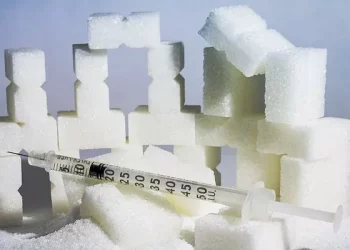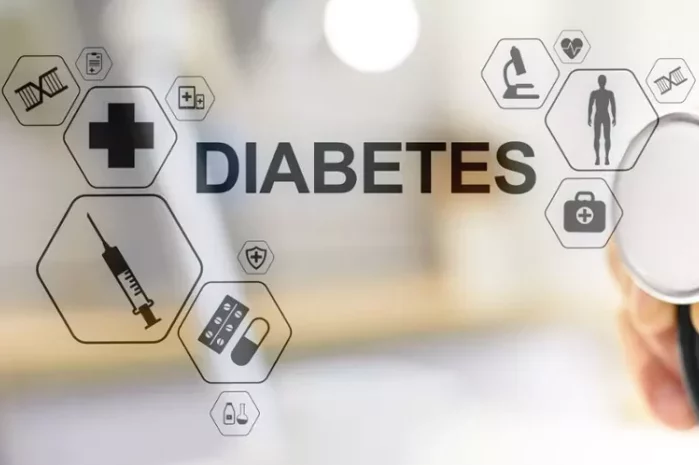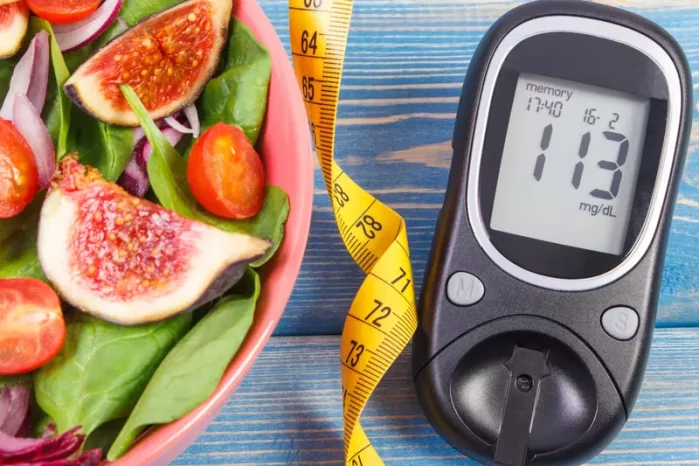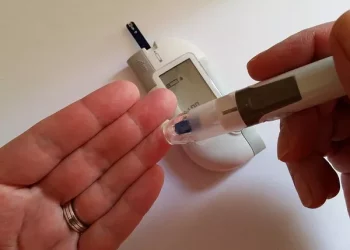Diabetes, a chronic condition that affects millions of people worldwide, has far-reaching implications for the body. One of the more puzzling and sometimes alarming symptoms for those with diabetes is sweating when blood sugar levels drop. While this may be a common experience for many individuals, understanding the underlying reasons why low blood sugar leads to sweating can help manage symptoms more effectively. In this article, we will explore the science behind sweating in response to low blood sugar, also known as hypoglycemia, and offer guidance on prevention and management.
Understanding Hypoglycemia
Hypoglycemia refers to a condition where blood glucose (sugar) levels drop below the normal range, typically considered to be less than 70 mg/dL (3.9 mmol/L). Blood sugar is a vital source of energy for the body, particularly for the brain, which relies almost entirely on glucose to function. A sudden drop in glucose levels can disrupt normal bodily functions, leading to a series of symptoms, including sweating, dizziness, shakiness, confusion, and even fainting.
For individuals with diabetes, hypoglycemia can occur for several reasons, such as an overdose of insulin, skipping meals, excessive physical activity, or alcohol consumption. The body responds to low blood sugar by triggering several compensatory mechanisms to try and raise blood glucose levels back to normal. Sweating is one of these responses, and understanding why this happens requires an examination of the body’s physiological processes during hypoglycemia.
The Role of the Autonomic Nervous System
Sweating in response to low blood sugar is primarily mediated by the autonomic nervous system (ANS). The ANS is a part of the peripheral nervous system that controls involuntary bodily functions, such as heart rate, digestion, and respiration. It has two main branches: the sympathetic nervous system (SNS) and the parasympathetic nervous system (PNS). During hypoglycemia, the sympathetic nervous system becomes activated as part of the “fight or flight” response, a survival mechanism designed to prepare the body to respond to a threat.
The sympathetic nervous system stimulates the adrenal glands to release adrenaline (epinephrine), a hormone that plays a crucial role in counteracting the effects of low blood sugar. Adrenaline works by stimulating the liver to release stored glucose into the bloodstream, a process known as glycogenolysis. This helps raise blood sugar levels and provides the body with an immediate energy source.
In addition to releasing adrenaline, the activation of the sympathetic nervous system also triggers other physiological responses, such as an increase in heart rate, blood pressure, and sweating. The purpose of sweating during hypoglycemia is to help regulate the body’s temperature as it prepares for a fight or flight response. While this response may be helpful in acute situations, excessive sweating can be uncomfortable and concerning for individuals experiencing hypoglycemia.
Why Sweating Occurs Specifically with Low Blood Sugar
Sweating as a response to low blood sugar is a direct consequence of the activation of the sympathetic nervous system. Here’s a deeper look at why this happens:
Adrenaline Release: As mentioned earlier, adrenaline is released in response to hypoglycemia, and one of its effects is the stimulation of sweat glands. The release of adrenaline primes the body to react quickly, which includes sweating to cool down the body and maintain homeostasis.
Sympathetic Nervous System Activation: When blood sugar levels drop, the body perceives it as a stressor. The sympathetic nervous system then activates as if it were preparing the body for physical exertion. As part of this response, sweat glands are stimulated to release sweat to help manage the potential increase in body temperature caused by heightened metabolic activity.
Fight or Flight Response: Sweating is an essential component of the fight or flight response, which is activated during stressful or potentially dangerous situations. When blood sugar levels fall, the body interprets this as an emergency, prompting a series of adaptive reactions, including sweating, to help the body recover.
Counterregulatory Hormone Action: Alongside adrenaline, other counterregulatory hormones such as cortisol and glucagon are released during hypoglycemia. These hormones also have effects on the body’s metabolic processes and can contribute to the sweating response by enhancing the sympathetic nervous system’s activation.
Nervous System Feedback: The brain is continually monitoring blood glucose levels. When it detects a drop in glucose levels, it signals the body to initiate corrective actions, including the activation of the sweat glands. The feedback loop between the brain, autonomic nervous system, and endocrine system ensures that the body responds swiftly to prevent further complications.
Sweating and Hypoglycemia: Other Associated Symptoms
While sweating is a common response to low blood sugar, it is rarely the only symptom experienced during hypoglycemia. People with diabetes may experience a wide range of symptoms when their blood glucose levels dip too low. Some of these symptoms are a result of the physiological processes activated during hypoglycemia, while others may arise due to the body’s struggle to maintain homeostasis.
1. Shakiness and Tremors: As blood sugar levels drop, the body may begin to experience shakiness or tremors. This is a direct result of the body’s attempt to generate energy, particularly for the muscles and brain. Shivering can occur as part of the body’s compensatory mechanisms to raise glucose levels.
2. Rapid Heart Rate: The activation of the sympathetic nervous system leads to an increase in heart rate (tachycardia). This response is part of the fight or flight reaction and aims to supply more oxygen and nutrients to vital organs, including the brain and muscles.
3. Dizziness and Confusion: Low blood sugar can also lead to cognitive dysfunction, such as confusion, dizziness, or difficulty concentrating. The brain relies heavily on glucose, and when glucose levels fall too low, cognitive function can be impaired.
4. Fatigue and Weakness: As glucose is the primary energy source for the body, a lack of glucose can result in fatigue and weakness. This is because the body’s normal energy supply is compromised.
5. Irritability: Low blood sugar can affect mood and behavior. The brain’s need for glucose is critical for maintaining emotional stability, and when it is not met, irritability can arise.
Managing Sweating and Hypoglycemia
Sweating during hypoglycemia can be uncomfortable, but it is important to recognize that it is a normal physiological response. The key to managing sweating and other symptoms of low blood sugar is prevention and early intervention.
1. Monitor Blood Sugar Levels: One of the most effective ways to prevent hypoglycemia is to regularly monitor blood sugar levels. This can be done through home blood glucose testing or continuous glucose monitoring (CGM). By keeping track of glucose levels, individuals can anticipate drops before they become severe.
2. Adjust Insulin Dosage: For individuals with diabetes who use insulin, it is important to adjust insulin doses based on activity levels, meal plans, and other factors. Miscalculating insulin needs can lead to hypoglycemia, and proper adjustment can prevent blood sugar levels from falling too low.
3. Eat Regular, Balanced Meals: Consuming regular, balanced meals that include complex carbohydrates, protein, and healthy fats can help maintain stable blood sugar levels throughout the day. Skipping meals or going too long without eating increases the risk of hypoglycemia.
4. Have Fast-Acting Carbs on Hand: In the event that blood sugar does drop too low, it is essential to have a source of fast-acting carbohydrates readily available. Foods such as glucose tablets, fruit juice, or regular soda can help raise blood sugar levels quickly. It is important to consume the correct amount to avoid overshooting and causing hyperglycemia (high blood sugar).
5. Be Aware of Symptoms: Recognizing the symptoms of low blood sugar early is key to avoiding more severe consequences. Symptoms like sweating, shaking, dizziness, and confusion can signal that blood sugar is dropping. Prompt action can help prevent the situation from worsening.
Conclusion
Sweating in response to low blood sugar is a physiological reaction governed by the autonomic nervous system. This response is part of the body’s broader “fight or flight” reaction aimed at raising blood glucose levels to protect vital functions. While sweating may be an uncomfortable symptom, it is important to understand that it is the body’s way of reacting to a drop in blood sugar levels. By maintaining regular blood sugar monitoring, adjusting insulin doses, and being aware of early symptoms, individuals with diabetes can effectively manage hypoglycemia and minimize the occurrence of sweating.
If you or someone you know experiences frequent or severe hypoglycemia, it is essential to consult a healthcare provider to develop a personalized management plan. With proper care and attention, sweating and other symptoms of low blood sugar can be managed, allowing individuals with diabetes to lead healthier, more comfortable lives.
Related topics:
What Are Healthy Fruits for Diabetics?























